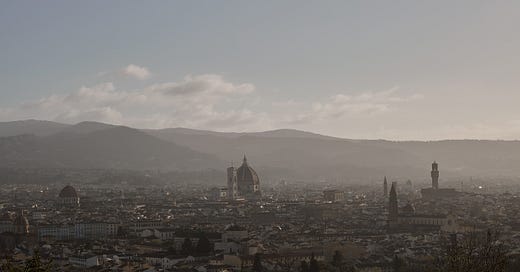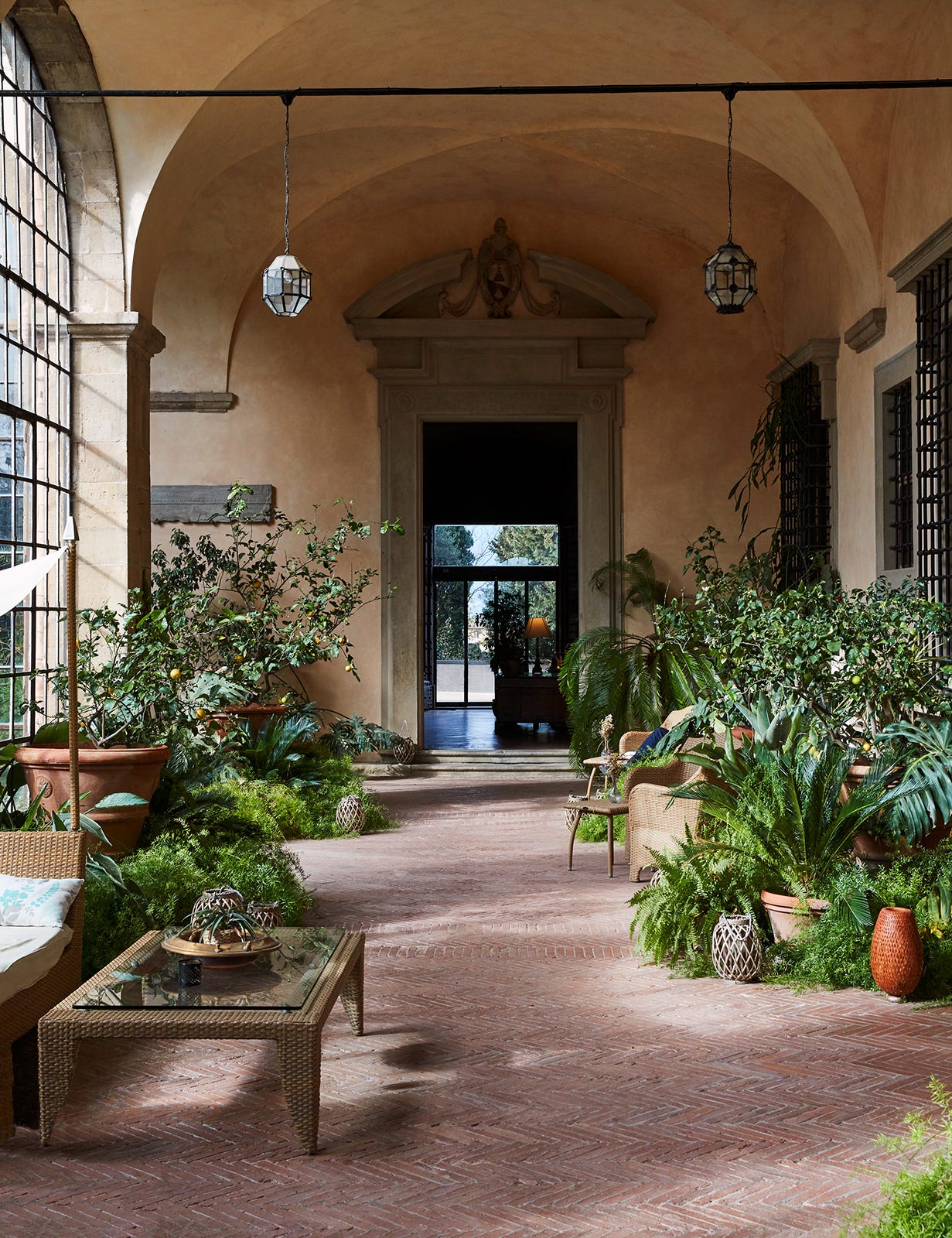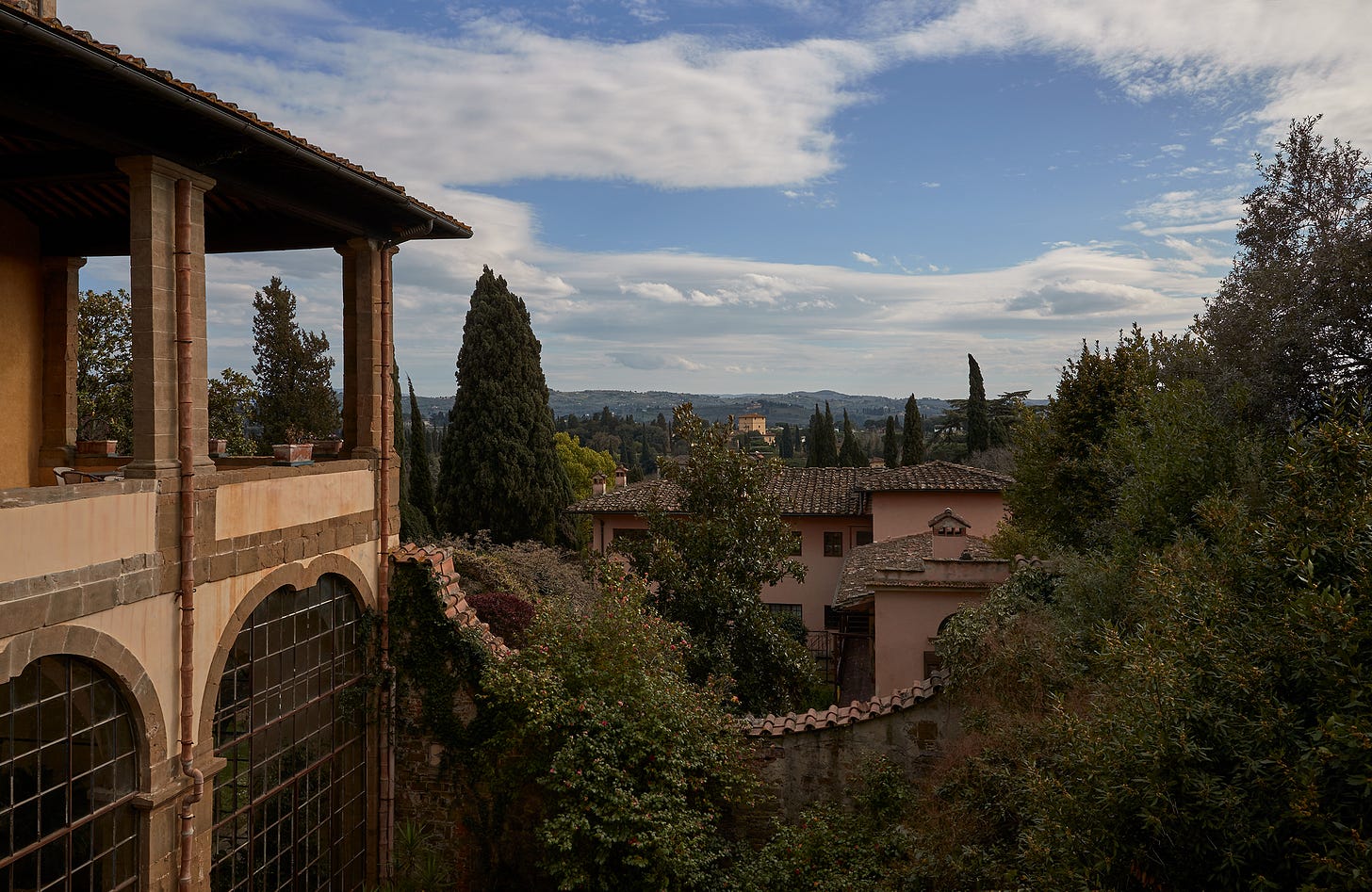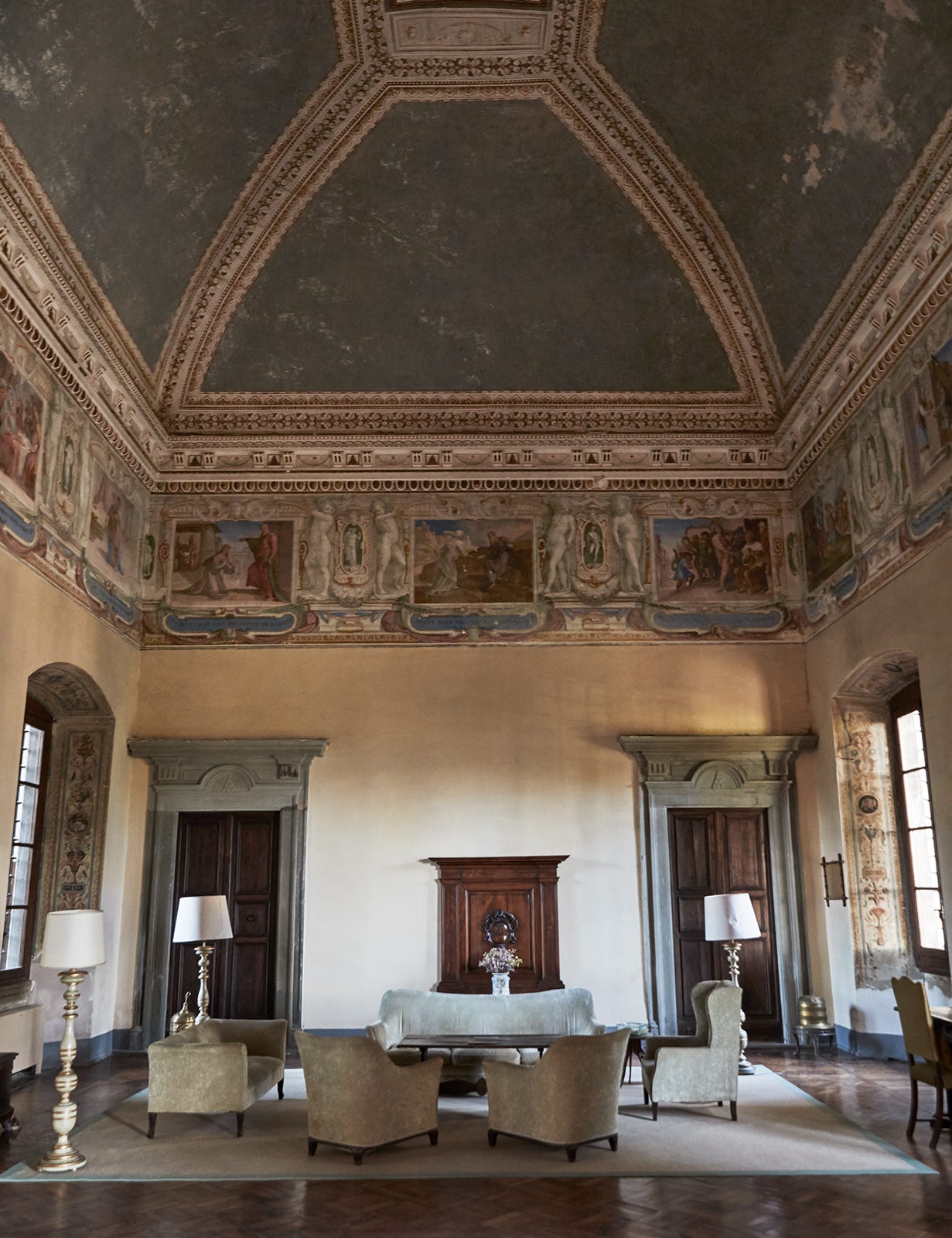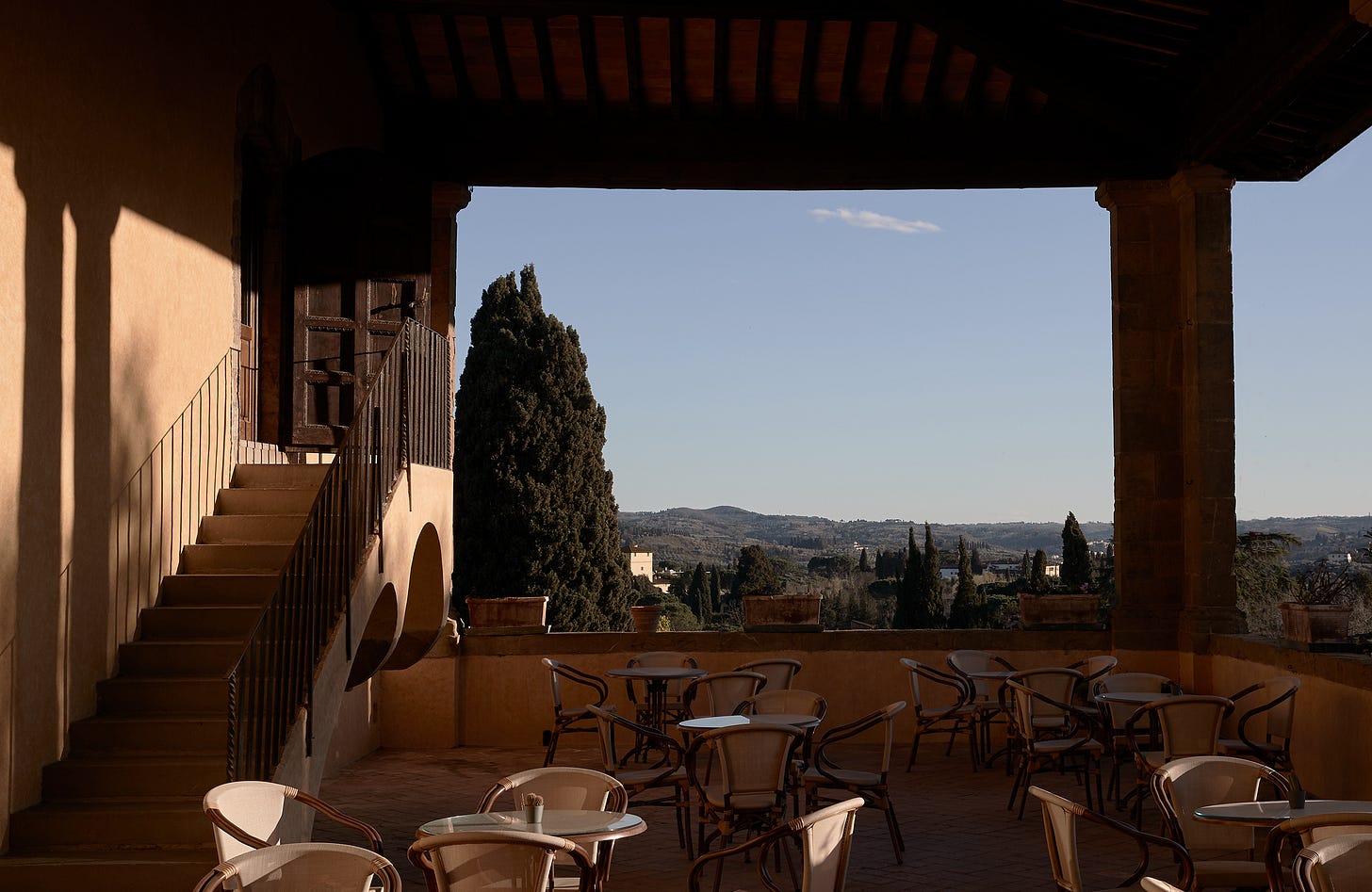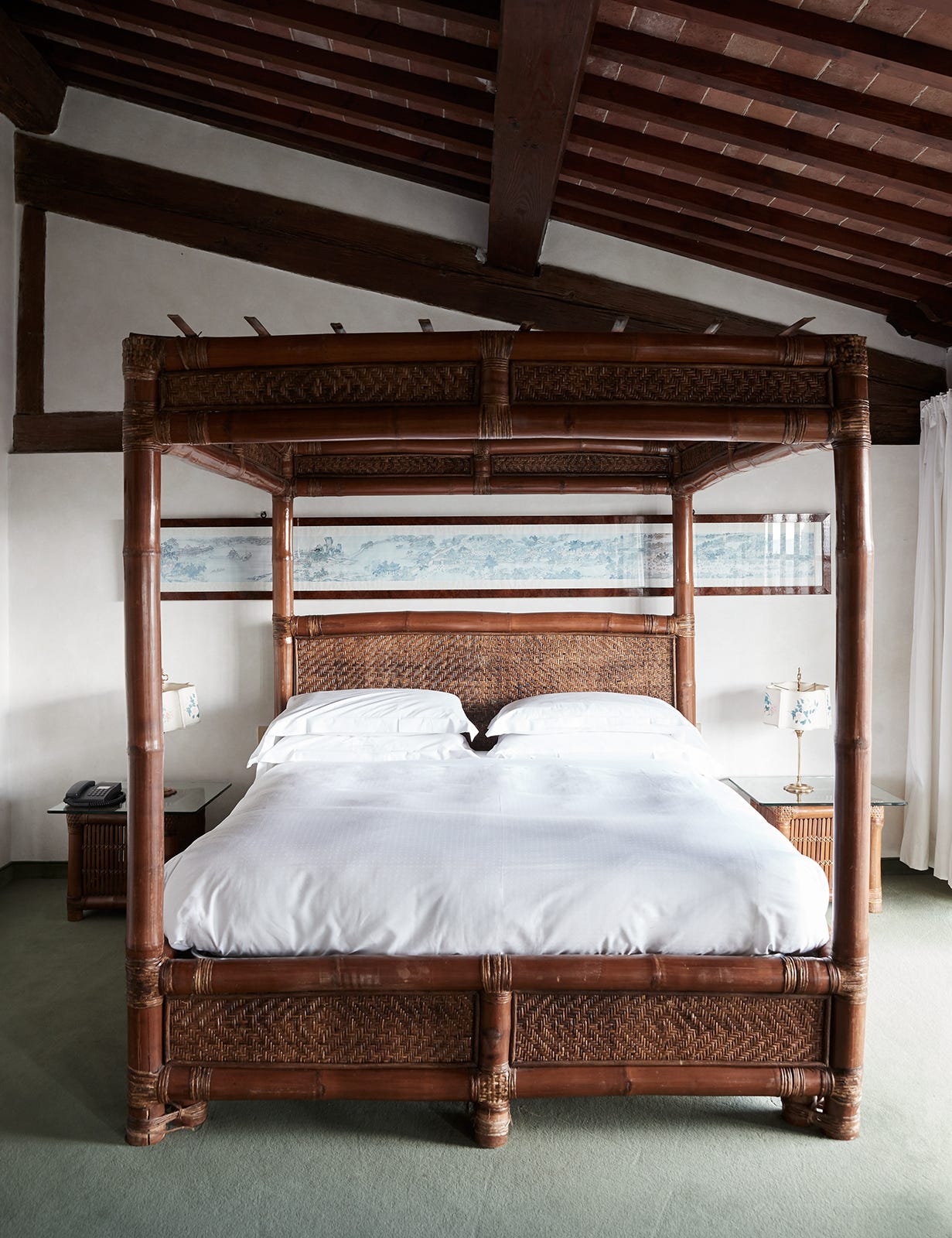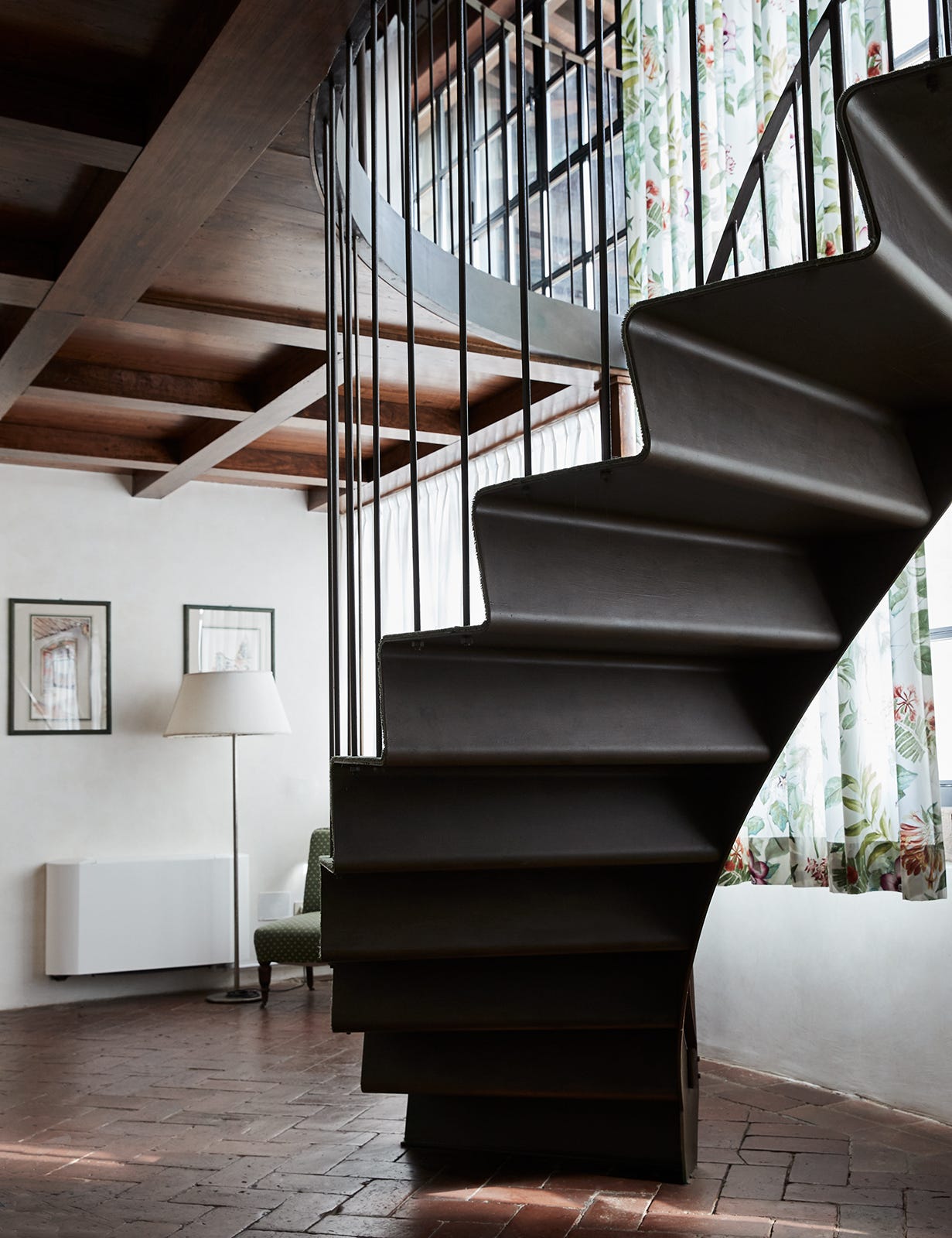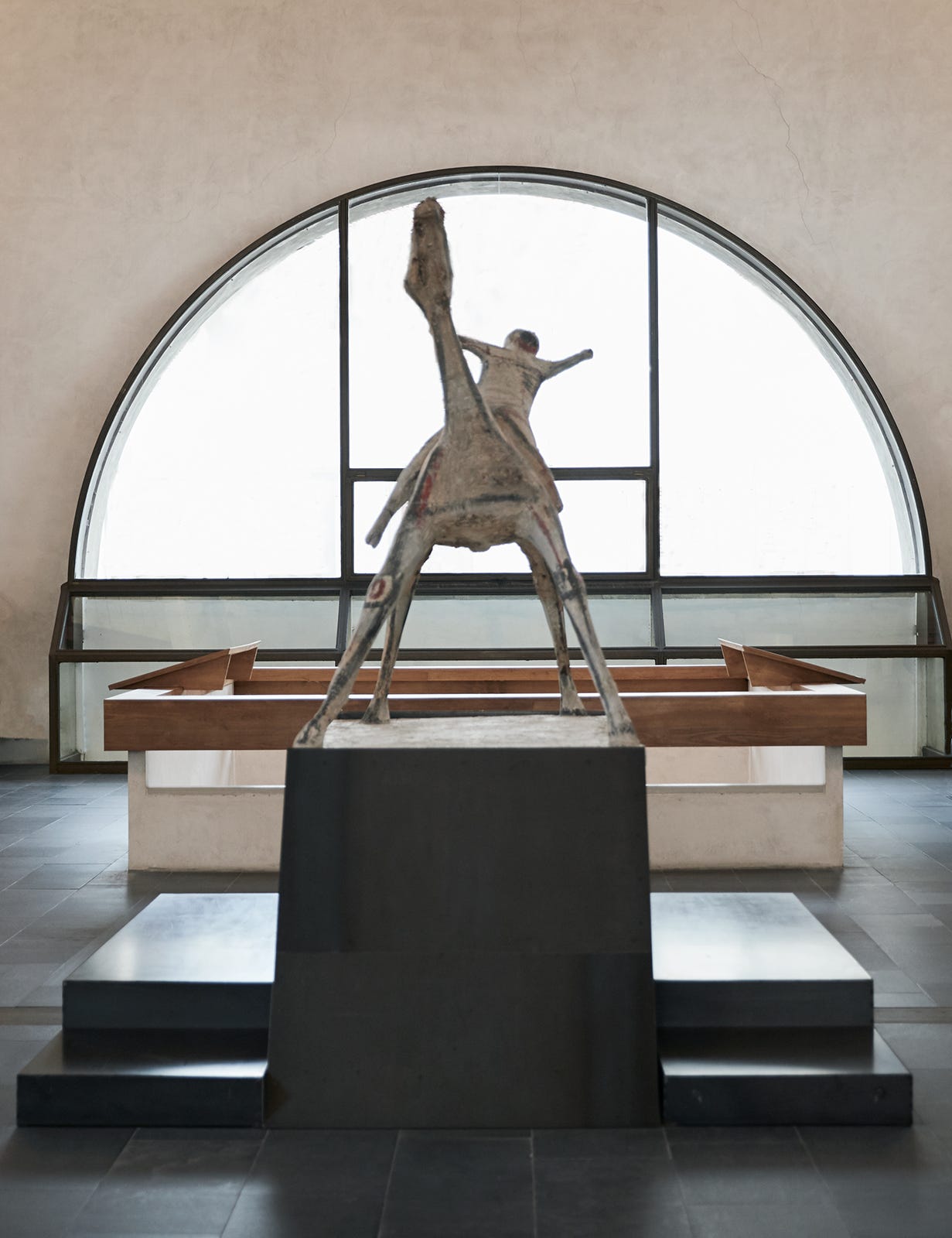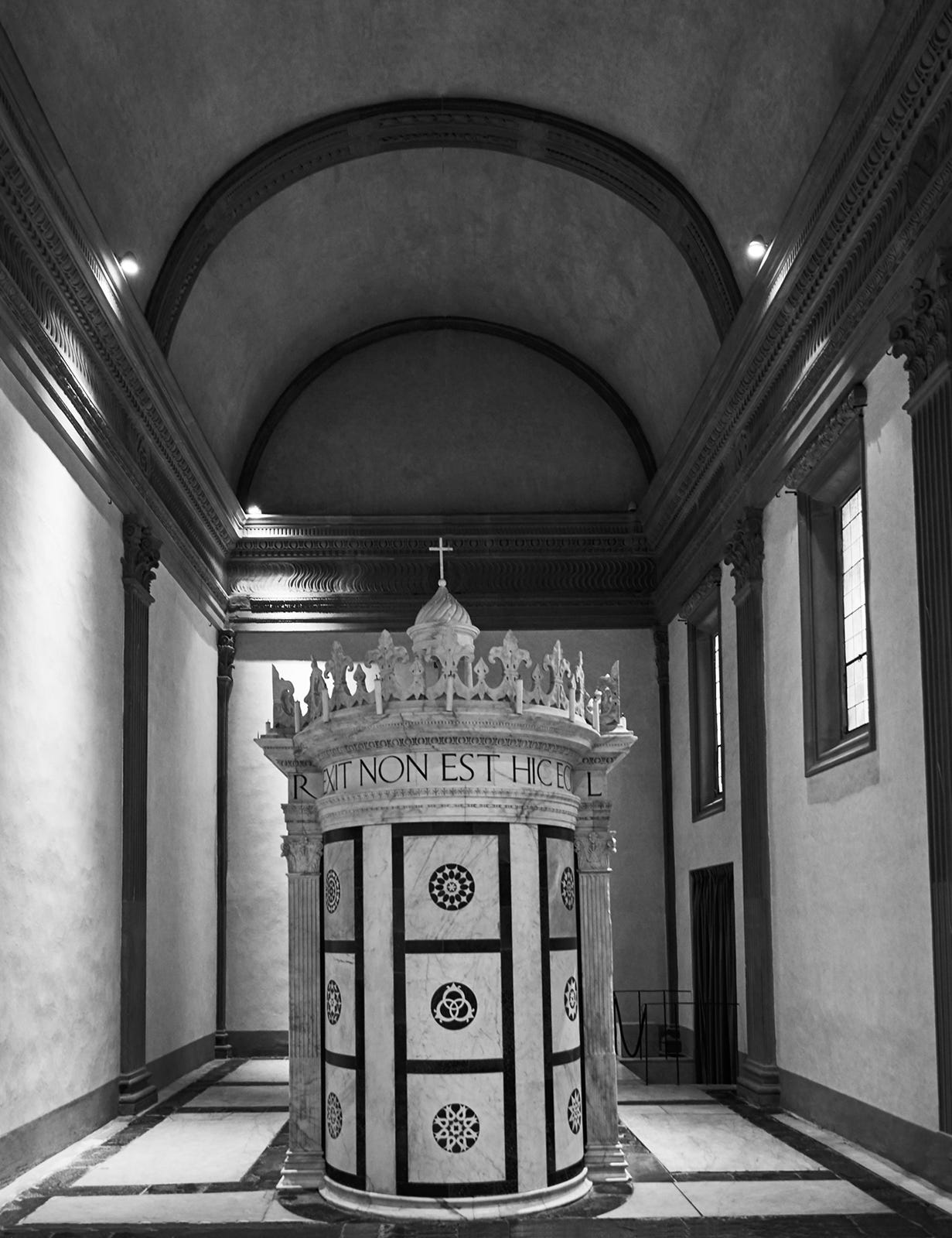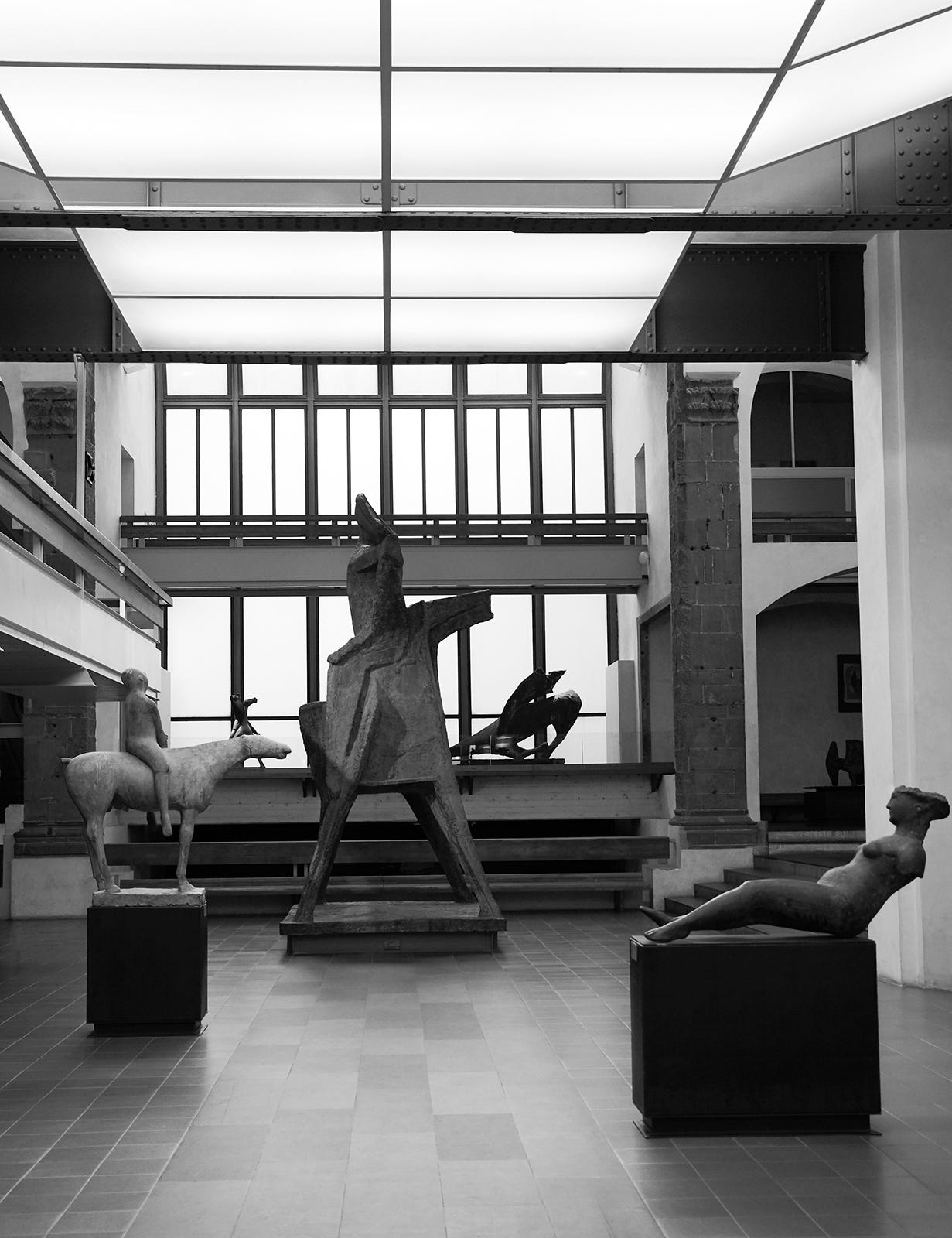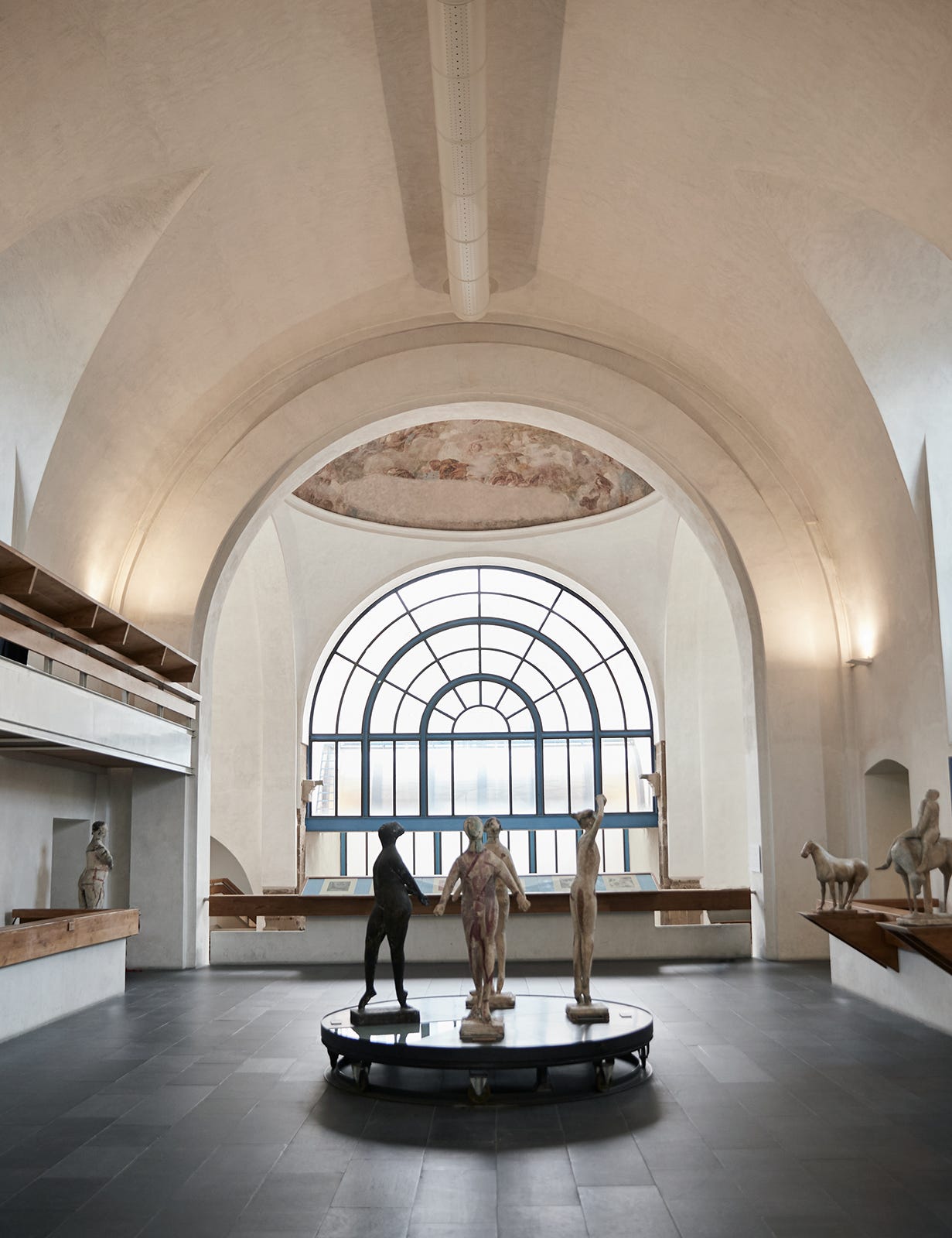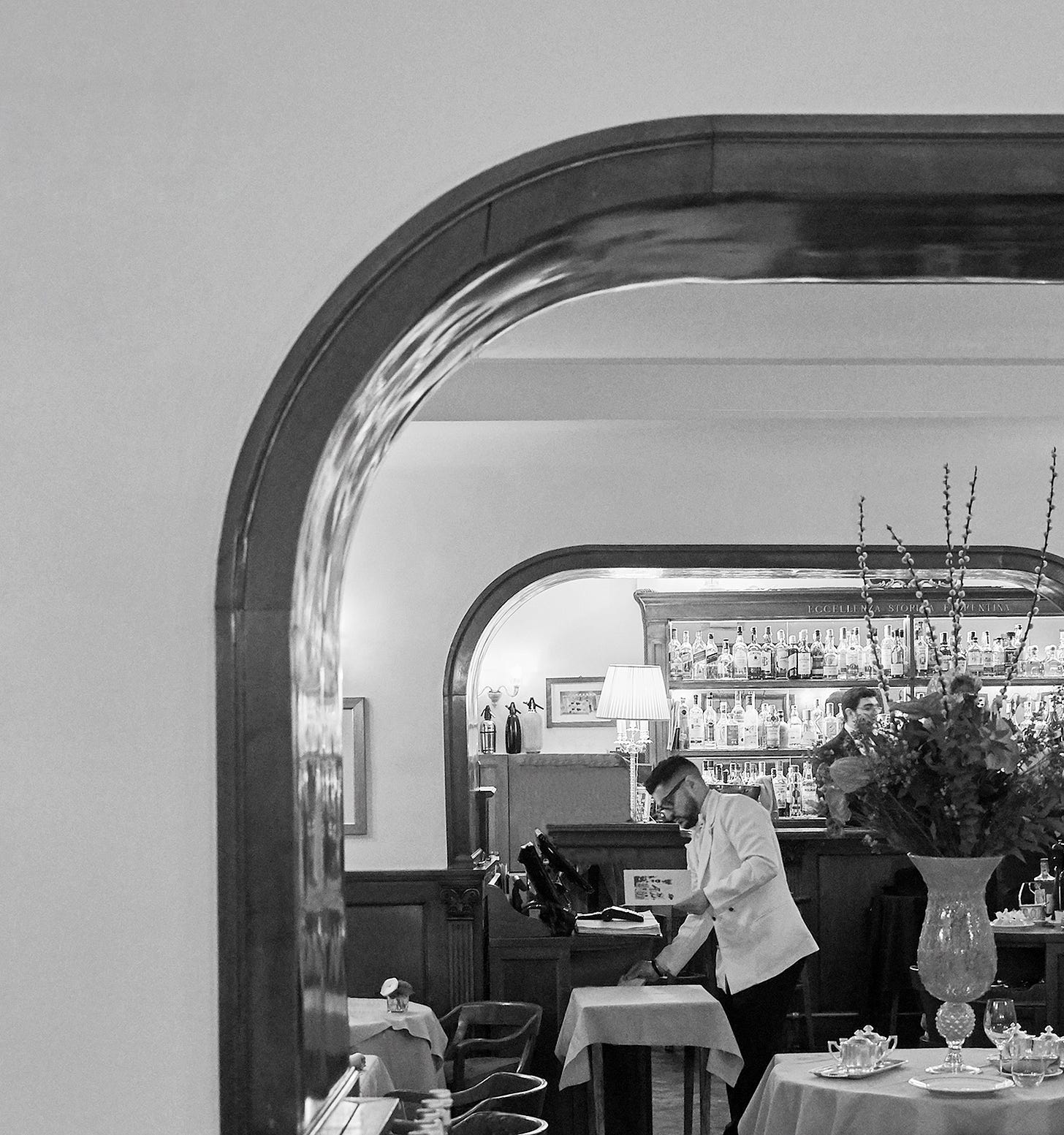There is a mythical quality to Tuscany. The gently sloping hills, ancient stone mansions, and many quaint towns come together to form an almost ideal place for a summer holiday.
The beauty of the landscape has drawn people here for thousands of years, which also has made Tuscany an important cultural centre. Florence was the birthplace of modern fashion, and even today, the town holds an important place in the fashion business, as home to the influential menswear fair Pitti Uomo.
Florence is a small town with a big reputation. This means however that it tends to be overcrowded with tourists, especially in the summer months. The best way to enjoy the town’s attractions is to choose a hotel that is slightly outside of the city walls, like Hotel Torre di Bellosguardo (just ten minutes from the heart of Florence).
An avenue lined with century-old cypresses lead up to the castle, and above the main entrance is a statue (called Charity) by famous sculpture Pietro Francavilla. This way, you can visit Florence as much as you want, but you will also have respite from the crowds.
Instead of a traditional reception area, the visitor will enter into a 15th century ballroom, adorned with frescoes by Bernardino Poccetti. The many halls are adorned with stone carved fireplaces. With only 16 guestrooms and a large garden (which includes a swimming pool overlooking Florence), the hotel never feels crowded.
The most beautiful space is perhaps the winter garden, decorated in a relaxed and bohemian style, perfect for an aperitivo, solving a crossword on a sunny afternoon, or taking a discrete afternoon nap when everyone else is away, visiting museums or shopping.
The hotel includes a farm that provides organic fresh fruits and vegetables for breakfast. It also has a pet collection of farm animals (three donkeys, a pony, ducks, and hens).
If you continue walking past the farm, you will reach Porta Romana, one of the ancient gates in and out of the city. If you prefer not to walk into town, the hotel offers a transfer service.
Small pets are welcome.
Florence offers some of the best hotels in Italy, and it’s not always easy to decide where to stay. What makes Torre di Bellosguardo so attractive is the combination of a slightly secluded location (making it popular with celebrities looking to unwind in private), beautiful architecture and large, comfortable guestrooms.
It was built in the 1200s as a hunting lodge and expanded to a mansion in 1500. In the 1920s and ‘30s, the Baroness Marion von Hornstein-Franchetti turned it into a salon for royal and aristocratic guests, prominent politicians, and lauded artists, who came here from all over Europe.
For an excursion: Museo Marino Marini
Marino Marini was one of Italy’s most popular 20th century sculptors, appreciated for his sense of minimalist shapes and understated silhouettes. The Florence-based museum dedicated to his work is housed in a former church, San Pancrazio. Founded by Charlemagne, its documentation can be traced back all the way to 931. Since 1808, it is no longer considered a holy site, and instead it has been used for a variety of things, including the Florence city lottery and as a tobacco factory.
In the 1980s, the building was redesigned for the Marini sculpture collection. Architects Lorenzo Papi and Bruno Sacchi took inspiration from Marini’s eye for shapes, and repurposed the church to fit Marini’s artistic vision. It is the second largest collection of his work, after the collection dedicated to him in Pistoia, his original hometown.
Within the walls of the ex-church is the Rucellai Sepulchre (or the Sacellum of the Holy Sepulchre). It dates to the 15th century (completed in 1467) and is a small funeral chapel that contains the tombs of Giovanni Rucellai and members of his family. Its design emulates the Holy Sepulchre in Jerusalem’s Anastasis.
Marini was trained as a painter but worked primarily as a sculptor, inspired by the style of Etruscan art and the sculptures of Arturo Martini. He was part of an international artistic community, regularly visiting Paris to remain updated.
In 1943, he went into exile in Switzerland, before returning to Italy in 1946, when he settled permanently in Milan.
He was often rewarded for his art; he was awarded the Grand Prize for Sculpture at the Venice Biennale in 1952, and the Feltrinelli Prize at the Accademia dei Lincei in Rome in 1954. Throughout his life, his work revolved around certain themes.
One was the equestrian subject; Marini would repeatedly return to the stylized image of man with outstretched arms, sitting on a horse.
The evolution of the horse and rider reflects his artistic development. The first time the theme appeared, in 1936, the proportions were slender and the two appeared calm, almost formal. The year after, the horse was depicted rearing and the rider gesturing. By the 1940, the forms were simpler and more archaic. In Marini’s final work, the rider is unseated, as the horse falls to the ground, reflecting his own growing concerns for the future.
The museum preserves 183 works by Marino Marini – a collection of sculptures, paintings, drawings, and engravings. The works are arranged thematically, with the equestrian sculptures placed in the centre, immersed in natural light coming from the large skylight. This is in line with Marini’s own philosophy that art should be viewed in natural daylight (and not placed on a pedestal in a dimly lit room).
The museum showcases exclusively Marini’s art, produced between 1916 and 1977, exhibited on the four levels of the museum.
For dinner
We never visit Florence without stopping at Harry’s Bar. It first opened its doors in 1953 (at Via del Parione), and ten years later, it moved to its current adress, in Lungarno Vespucci. The name is confusing, as it also exists in Rome, Paris and – perhaps most notably – in Venice. The founders Enrico Mariotti and Raffaello Sabatini were good friends of Giuseppe Cipriani, who was the owner of the Venice-based restaurant with the same name.
Unfortunately, since July this year, the restaurant is closed due to a dispute with the owner of the building. But – there is actually a second Harry’s Bar in Florence, part of Hotel Sina Villa Medici, and called Harry’s Bar The Garden. Having stayed at this hotel several times in relation to the Pitti Uomo menswear fair, this secluded restaurant is also a favourite, especially known for their pizzas.


